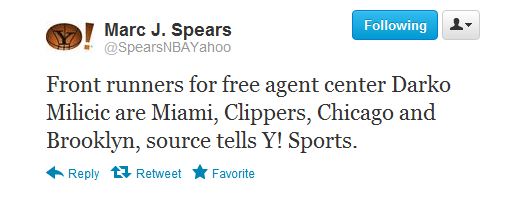Let the good times roll. If only we had known in April that back-to-back trips to Arlington and Denver were what the Halos needed, perhaps we could’ve avoided the mess that was the first 75 games of the year—not to mention all the collateral damage that came with it. The Angels are easily playing their best baseball of the season, as they are now winners of five straight and nine of their last 10. They’ve outscored their opponents 46–12 in the first five games of their strange final road trip of the proverbial first half, and their starters have allowed three runs or fewer in 12 consecutive games.
While the Angels did most of their damage in Texas without the help of their reigning MVP (2-for-11), Mike Trout was a huge catalyst in the two-game set at Coors. He went 4-for-7 with three dingers in the series, pushing his season slash line up to a ridiculous .305/.400/.604. (Hooray, BABIP regression!) Who needs stolen bases where you’re leading the league in slugging? Speaking of slugging, the Halos mashed six dingers in the two games and have gone deep 15 times in the last eight games. The team SLG is now a season-best .395, just nine points shy of the sixth spot in the AL.
As unlikely as it seemed a week ago, the Angels now have a very real chance of entering the all-star break atop the AL West standings. They sit just a game and a half behind the stagnant Astros, who must survive the Indians and Rays to hang onto their slim lead into the midsummer classic. The Halos, meanwhile, get a four-game set against the Mariners, against whom they’re 6–3 so far this season.
Boxscore Breakdowns
Series Takeaways
Heaney Is Here To Stay
Jerry Dipoto may be gone, but his final pitching acquisition isn’t going anywhere. Andrew Heaney turned in his third stellar start with the Angels in as many chances on Tuesday, this time surviving the gauntlet that is Coors Field for 7⅓ innings. Per Baseball-Reference, Heaney has already accumulated as much or more value (0.8 WAR) in just 20⅓ IP than every Angels pitcher other than Hector Santiago and Huston Street.
Perhaps the most exciting part thing about the fantastic start to his (hopefully long) Halos career is that his early returns don’t appear to have much to do with smoke and mirrors. His LOB% certainly won’t stay above 90 percent for the rest of the season, but his 5.6:1 K/BB ratio and his solid command of his fastball seem to portend more good things to come. His ERA will inevitably climb out of sub-2.00 territory, but maybe not by too much.
The big question Heaney’s emergence creates is what happens to the rotation once Jered Weaver returns from the DL. Heaney isn’t budging from his spot, and Scioscia has already said that he’s not planning on using a six-man rotation. So who gets the boot? The simplest solution would be to open a spot by trading someone away. Trades themselves aren’t simple, though, so that might not be an option right away. (Though hopefully it’ll happen eventually. The offense has been great lately, but an upgrade in LF would still be nice.) If a trade can’t happen, I think the best answer is to utilize one of those minor-league options Matt Shoemaker has left. Well, “best” might be too strong a word, because that’d probably involve not starting Weaver. But you know what I mean.
BABIP Continues To Hate Pujols
Among qualified hitters, Albert Pujols’ .221 BABIP is the fourth-worst mark in baseball. For all the dingers he’s walloped this year, the guy just can’t seem to catch a break when it comes to balls in play. Some of his BABIP misfortune is certainly the result of teams employing an effective overshift, but that doesn’t explain all. Pujols was shifted nearly as frequently last season, when far more of his balls in play were grounders (45.7% vs 39.6%), and still managed a .265 BABIP by the year’s end.
So what’s the deal?
Magnets. Definitely magnets. Everything the guy hits hard that doesn’t end up over the fence seems to find its way into a glove. This was evident yet again at Coors on Wednesday, as Pujols rocketed a pair of line drives right at waiting outfielders.
As the above chart shows, Albert isn’t hitting the ball any softer (92.30 mph, 25th in MLB) than his peers, he’s just not getting the same bounces they seem to get. Goldschmidt has an average exit velocity of 93.08 mph and a .402 BABIP (!). Cabrera has an average exit velocity of 93.59 mph and a .394 BABIP. The big discrepancy seems to be on balls hit between 90-99 mph. While Cabrera and Goldschmidt are hitting .388 and .373, respectively, on balls hit at that velocity, Pujols is hitting just .219.
Honestly, I have no idea what’s going on there. Maybe Pujols is hitting a lot of those balls closer to 90 mph than 99 mph? Maybe a lot of those are simply hard grounders into the shift? His batting average on line drives (.545) is significantly lower than his career norm (.759) and the league’s (.683), so it could simply be a function of bad luck. No matter the cause, we should expect Albert’s BABIP to climb rather steadily in the second half. There’s no way he’ll finish the year with a number more that 35 points below his previous career low, especially when he’s squaring up the ball so regularly. I doubt the positive regression will push his batting average over the .300 mark, but I could see .285 happening if he continues to avoid grounders and pop-ups.
Add The Sports Daily to your Google News Feed!

